Indonesia’s hidden destinations beckon to the world
By Ock Hyun-juPublished : July 15, 2016 - 17:49
At a glance, Indonesia’s bustling capital Jakarta seems like many other metropolitan cities in Southeast Asia. Its streets are lined with cutting-edge skyscrapers and packed with cars and motorbikes that cause heavy congestion.
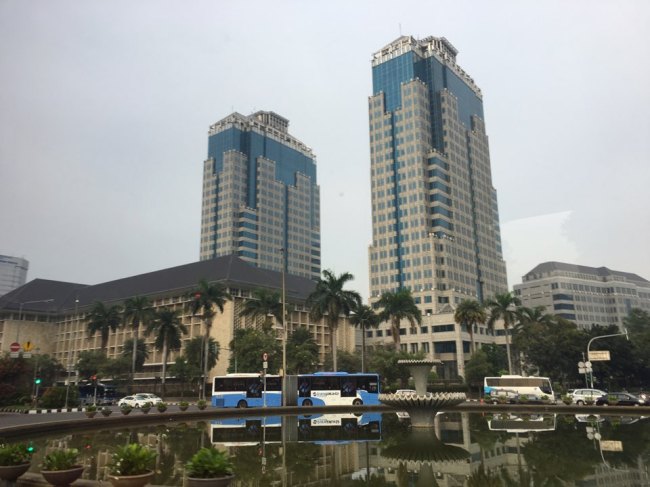
But only a few hours away, the tropical country, composed of more than 17,500 islands, boasts natural beauty in every corner -- from white sandy beaches and colorful marine treasures to active volcanos that have been well-preserved.
With the aim of attracting 16 million foreign tourists by 2017, the Indonesian government adopted in June 2015 a 30-day visa-free system for 169 countries, including Korea, making it easier for travelers to discover the exotic destination.
For those seeking to indulge in nature and experience Indonesia’s unique culture shaped by diverse tribes and religions, Indonesia offers more than its famous resort island of Bali. Here are a few of the hidden destinations.
Yokyakarta: a glimpse into Indonesia’s history
Yokyakarta, Indonesia’s former capital, provides travelers with a quick glimpse into Indonesia’s rich history through its ancient monuments and sites. The historic city is the second most visited after Bali and is usually swarming with local students on school trips.
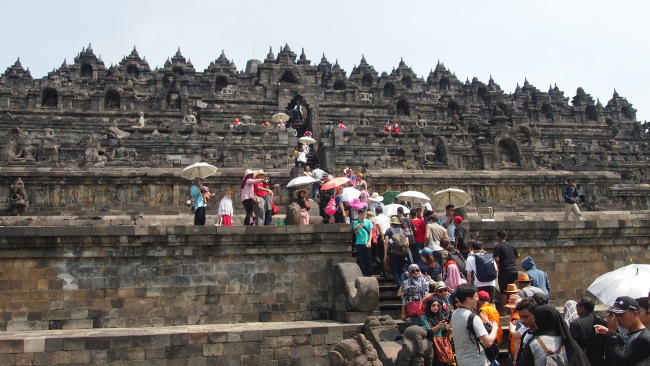
An hour from the city center, there is a UNESCO World Heritage-listed Borobudur Temple, known as the world’s biggest Buddhist temple. Built in the ninth century and discovered in 1815 under volcanic ash, the temple’s design shows India’s influence on the region and is also fused with Indonesian elements.
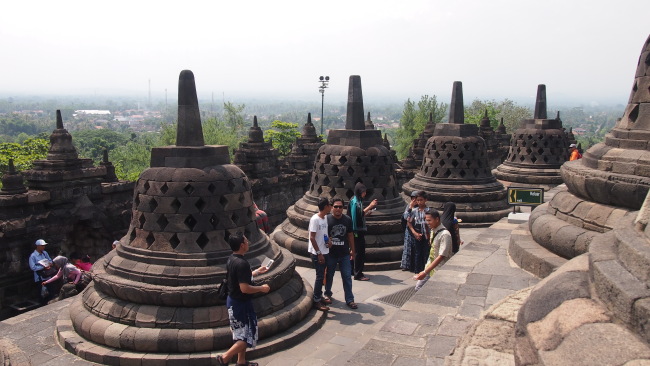
Standing against the panoramic backdrop of Menoreh mountain range, the 31.5-meter-long temple has 700 stairs and stone wall carvings representing the life of Buddha. When tourists walk through the crowds busy taking pictures to finally reach the top, a monumental hemispherical stupa awaits them.
Excited to see a group of Korean tourists, some Indonesians, wearing school uniforms and hijabs or holding umbrellas to avoid the blazing sun, sheepishly approach foreigners to ask for a selfie together.
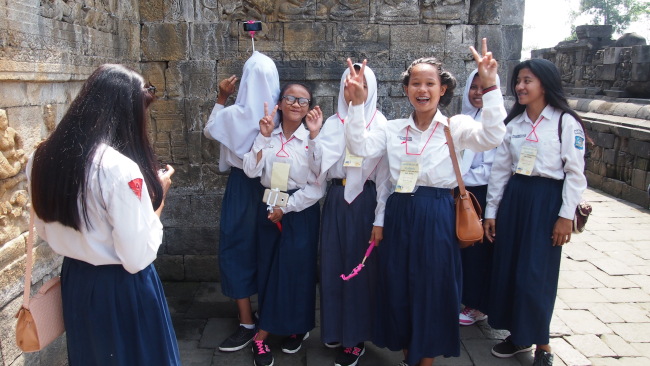
Visitors wearing shorts and skirts above their knees are required to wear a sarong provided by the temple’s management office before entering the site.
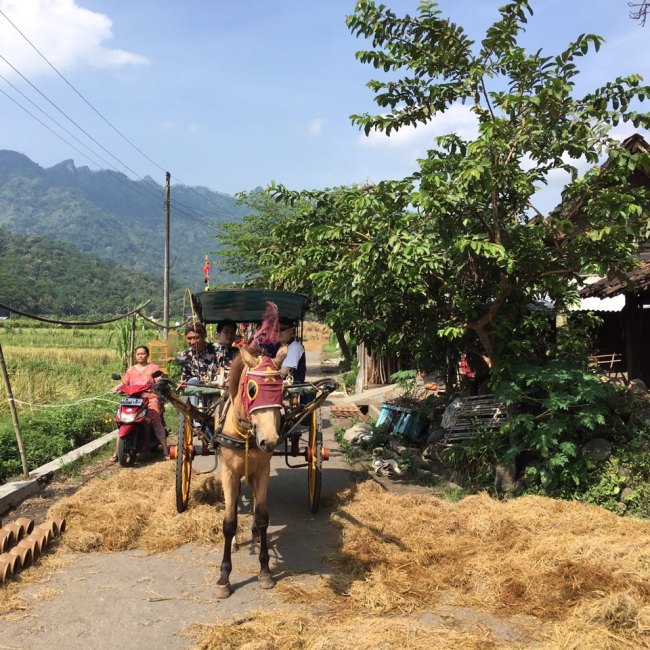
A quick guided tour on a horse carriage around a traditional village, called Andong Village Tour, is also available near the temple. Tourists can get a sense of the rural life of local residents, make pottery and watch villagers making tofu during the hop-on-hop-off journey.
Located only a few hours away is Mount Merapi, also known as the Mountain of Fire, the most active volcano in Indonesia standing on the Pacific Ring of Fire, an intersection of different plates. One of the most deadly volcanic eruptions in decades was from Mount Merapi, which began a series of eruptions in 2010 and claimed 353 lives. Over 350,000 people have had to evacuate from the affected area.
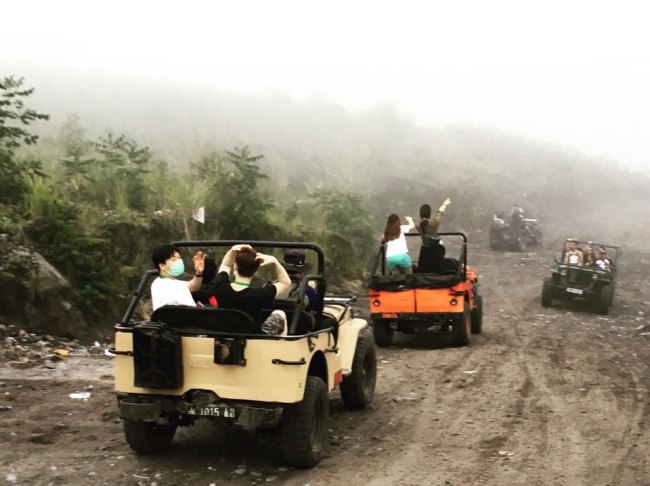
What takes adventure to a whole new level are the off-road trips to the mid-spot of Mount Merapi at 2,930 meters. The roughly two-hour ride on Jeep vehicles takes passengers through a bumpy road on which debris from the 2010 eruption can still be spotted. If lucky enough, passengers are able to be drenched by splashes of water, while driving through streams created by rainfall.
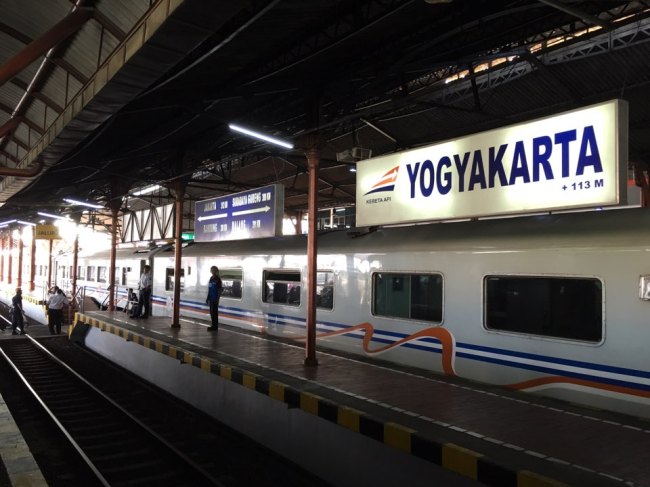
For a more local experience, instead of taking the one-hour flight from Jakarta, travelers can take a train from Bandung to Yokyakarta, which takes eight hours and costs only $10 per person. A picturesque view outside the windows – from local houses with red roofs to vast lush green fields – is a bonus. Trains run three times a day and tickets can be booked online.
Labuan Bajo: snorkeling, trekking and more
Labuan Bajo, a fishing town an hour away by plane from Bali, serves as base to start a breathtaking journey through neighboring islands which largely remain unexplored.
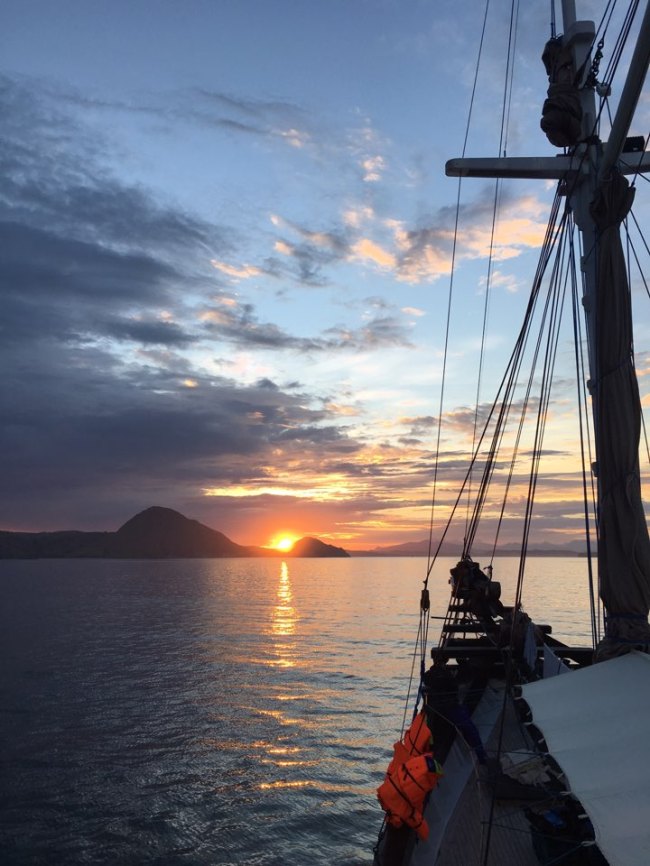
Waking up to a stunning sunrise and sleeping under a starry sky in the middle of the sea is a perfect escape for city dwellers in search of relaxation. Dive into the crystal-clear waters to look into the fascinating underwater life of colorful tropical fish and corals all around. Along the white sandy beaches, the water is warm, clear and surprisingly calm, which makes diving and snorkeling the most popular activities there.
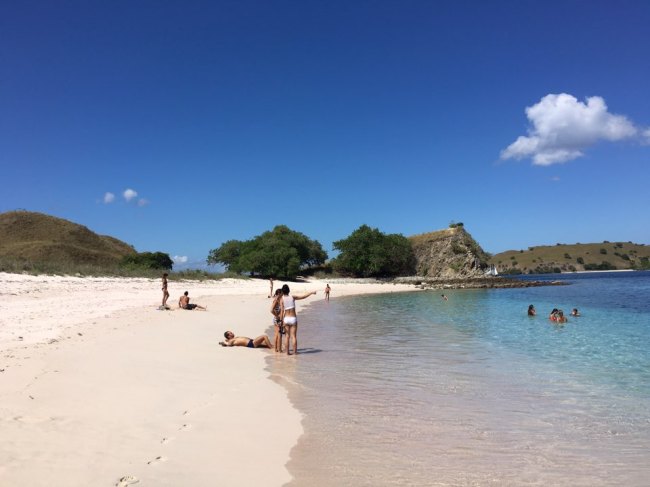
It is possible to hire boats -- from budget to luxury -- through local operators based in Labuan Bajo for a few days to travel around Rinca Island, Komodo Island, Padar Island, Kelor Island, Pink Beach and others. The cost depends on the size of the group and quality of the ship. Book cruise ships at least two weeks in advance as fuel, food and water should be transported from Bali.
Komodo Island: hide-and-seek with living dragons
The Komodo National Park, which tourists can reach by ferry from Labuan Bajo, is home to some 2,500 komodos, the biggest lizard species also called “living dragons.” The site was declared a World Heritage Site by UNESCO in 1986 due to the rarity of the animal.
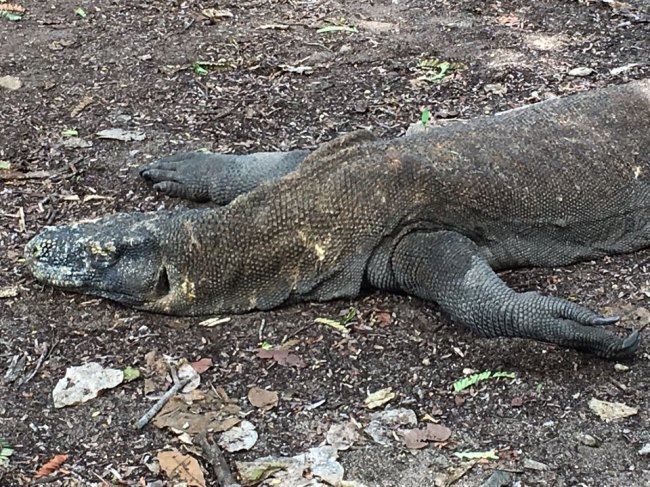
Looking for 3-meter-long dragons that can weigh up to 89 kilograms is not an easy task. According to rangers who guided a group of Korean tourists, most of the Komodo dragons stay off mountain trails, rest in shaded areas during the day and are active in the morning and early afternoon. They hunt only once a month as they have slow metabolism.
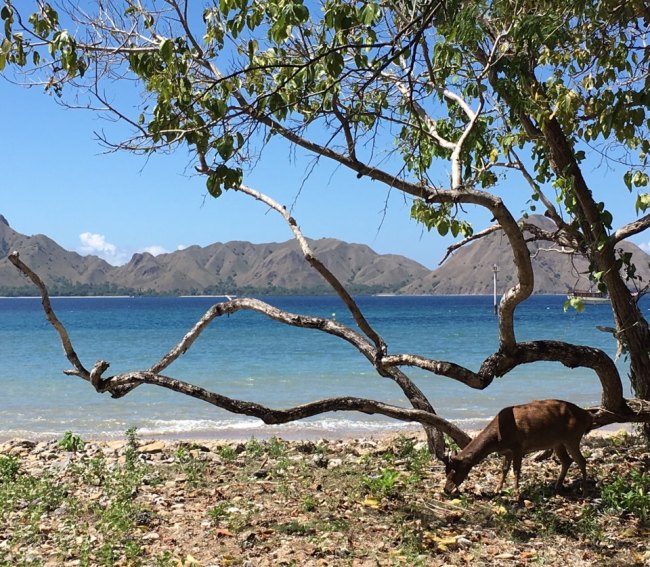
Tourists must be on a strictly guided tour with trained rangers because the Komodo dragons prey on mammals including humans. They are extremely sensitive to the smell of blood, so those who having their period or have cuts on their skin are advised not to enter the island.
Along the trekking path lined with exotic trees and flowers, there were several signs reading “Please stay on trail.”
Bandung: locals’ weekend destination
Three hours away by car from Jakarta, Bandung, the capital of West Java Province, is popular among locals for weekend getaways, due to its cool temperature all year-round and European vibe.
Dubbed “Paris of Java,” the country’s third-largest city by population boasts Dutch colonial architecture, luxurious hotels, European boutiques and factory outlets selling affordable clothes.
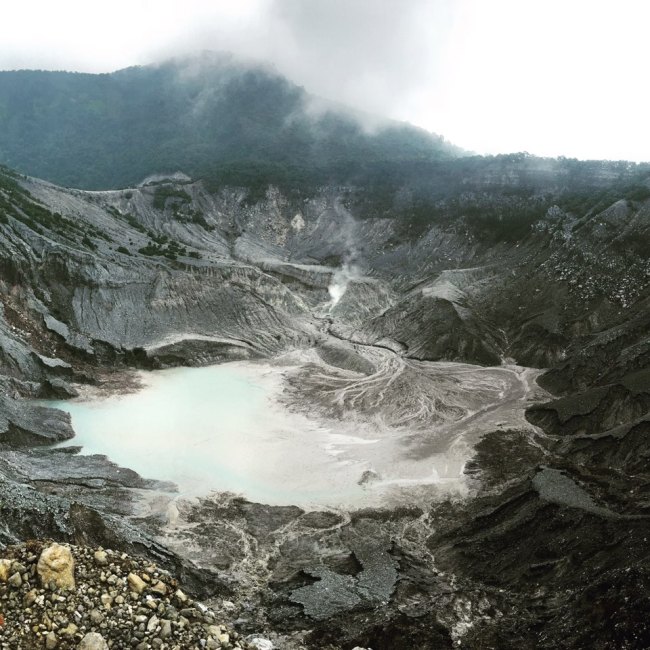
Tangkuban Perahu, an active volcano on Bandung’s outskirt, is one of the major tourist attractions in the area. Situated at an altitude of 2,084 meters, tourists can ride minibuses or walk through the jungle for an hour from the main gate to the edge of the crater to see the hot water springs and boiling mud on the top of the mountain.
Unlike a group of Korean travelers wearing summer clothes, Indonesians are seen wearing long-sleeved shirts and even leather jackets due to the cooler climate of the highland. Vendors go around selling furry hats, scarves and hand-picked strawberries.
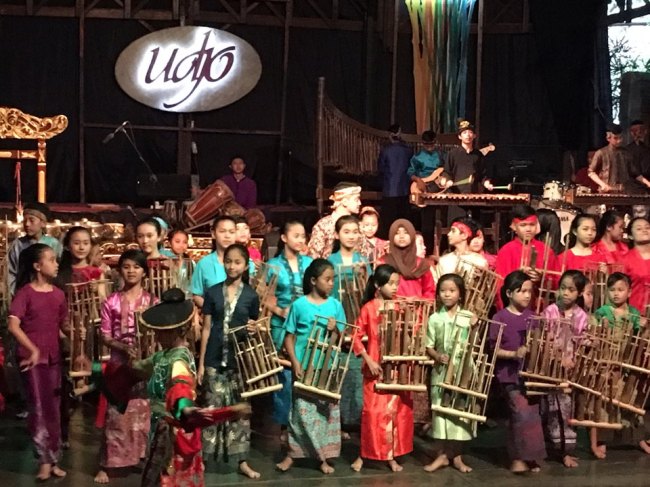
Only half an hour away, travelers can enjoy a two-hour traditional musical performance at Saung Angklung Udjo. At the breezy outdoor venue surrounded by bamboo trees, audience can watch children dancing and singing to traditional music played by a Sundanese musical instrument Angklung made of bamboos.
In the middle of the show, spectators are each given an Angklung named after Indonesia’s major provinces and learn how to play it following presenters’ simple hand gestures. They then can witness how the small instrument brings the audience together to create magnificent sound.
By Ock Hyun-ju (laeticia.ock@heraldcorp.com)
-
Articles by Ock Hyun-ju












![[Today’s K-pop] BTS pop-up event to come to Seoul](http://res.heraldm.com/phpwas/restmb_idxmake.php?idx=644&simg=/content/image/2024/04/17/20240417050734_0.jpg&u=)





![[KH Explains] Hyundai's full hybrid edge to pay off amid slow transition to pure EVs](http://res.heraldm.com/phpwas/restmb_idxmake.php?idx=652&simg=/content/image/2024/04/18/20240418050645_0.jpg&u=20240418181020)

![[Today’s K-pop] Zico drops snippet of collaboration with Jennie](http://res.heraldm.com/phpwas/restmb_idxmake.php?idx=642&simg=/content/image/2024/04/18/20240418050702_0.jpg&u=)